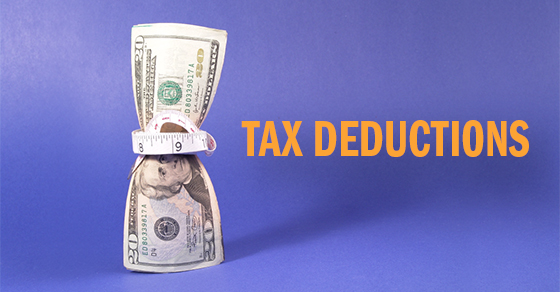 While the Tax Cuts and Jobs Act (TCJA) reduces most income tax rates and expands some tax breaks, it limits or eliminates several itemized deductions that have been valuable to many individual taxpayers. Here are five deductions you may see shrink or disappear when you file your 2018 income tax return:
While the Tax Cuts and Jobs Act (TCJA) reduces most income tax rates and expands some tax breaks, it limits or eliminates several itemized deductions that have been valuable to many individual taxpayers. Here are five deductions you may see shrink or disappear when you file your 2018 income tax return:
1. State and local tax deduction. For 2018 through 2025, your total itemized deduction for all state and local taxes combined — including property tax — is limited to $10,000 ($5,000 if you’re married and filing separately). You still must choose between deducting income and sales tax; you can’t deduct both, even if your total state and local tax deduction wouldn’t exceed $10,000.
2. Mortgage interest deduction. You generally can claim an itemized deduction for interest on mortgage debt incurred to purchase, build or improve your principal residence and a second residence. Points paid related to your principal residence also may be deductible. For 2018 through 2025, the TCJA reduces the mortgage debt limit from $1 million to $750,000 for debt incurred after Dec. 15, 2017, with some limited exceptions.
3. Home equity debt interest deduction. Before the TCJA, an itemized deduction could be claimed for interest on up to $100,000 of home equity debt used for any purpose, such as to pay off credit cards (for which interest isn’t deductible). The TCJA effectively limits the home equity interest deduction for 2018 through 2025 to debt that would qualify for the home mortgage interest deduction.
4. Miscellaneous itemized deductions subject to the 2% floor. This deduction for expenses such as certain professional fees, investment expenses and unreimbursed employee business expenses is suspended for 2018 through 2025. If you’re an employee and work from home, this includes the home office deduction. (Business owners and the self-employed may still be able to claim a home office deduction against their business or self-employment income.)
5. Personal casualty and theft loss deduction. For 2018 through 2025, this itemized deduction is suspended except if the loss was due to an event officially declared a disaster by the President.
Be aware that additional rules and limits apply to many of these deductions. Also keep in mind that the TCJA nearly doubles the standard deduction. The combination of a much larger standard deduction and the reduction or elimination of many itemized deductions means that, even if itemizing has typically benefited you in the past, you might be better off taking the standard deduction when you file your 2018 return. Please contact us with any questions you have.
As always, feel free to contact us with any questions.





 Did you make large gifts to your children, grandchildren or other heirs last year? If so, it’s important to determine whether you’re required to file a 2018 gift tax return — or whether filing one would be beneficial even if it isn’t required.
Did you make large gifts to your children, grandchildren or other heirs last year? If so, it’s important to determine whether you’re required to file a 2018 gift tax return — or whether filing one would be beneficial even if it isn’t required.
 While the Tax Cuts and Jobs Act (TCJA) reduces most income tax rates and expands some tax breaks, it limits or eliminates several itemized deductions that have been valuable to many individual taxpayers. Here are five deductions you may see shrink or disappear when you file your 2018 income tax return:
While the Tax Cuts and Jobs Act (TCJA) reduces most income tax rates and expands some tax breaks, it limits or eliminates several itemized deductions that have been valuable to many individual taxpayers. Here are five deductions you may see shrink or disappear when you file your 2018 income tax return: